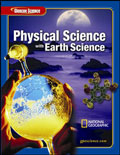1 A) All objects affected by Earth's gravity tend to change velocity. B) All objects affected by Earth's gravity tend to have unbalanced forces. C) All objects affected by Earth's gravity tend to fall toward the center of the planet. D) All objects affected by Earth's gravity tend to fall in the same direction. 2 A) atmospheres B) mountains C) oceans D) temperatures 3 A) Inertia B) Gravity C) Motion D) Momentum 4 A) sphere B) diameter C) square D) ellipse 5 A) orbit B) wandering C) sphere D) ellipse 6 A) aurora B) harmful radiation C) solar wind D) magnetic field 7 A) When it reaches the greatest distance south of the equator. B) When it reaches the greatest distance north of the equator. C) When it is directly above Earth's equator, and the number of daylight hours equals the number of nighttime hours. D) When there are more hours of daylight hours than there nighttime hours. 8 A) December B) June C) March D) October 9 A) Rotation B) Revolution C) Ecliptic D) Equinox 10 A) international date line B) time zone C) coordinated universal time D) prime meridian 11 A) ten degrees B) five degrees C) fifteen degrees D) three hundred and sixty degrees 12 A) It is the plane of Earth's orbit around the Sun. B) It is the plane of the Sun's orbit around Earth. C) It is the motion of Earth in its orbit around the Sun. D) It is the spinning of Earth on its axis. 13 A) Earth's seasonal changes are caused by gravitational pull. B) Earth's seasonal changes are caused by its tilt, rotation, and revolution. C) Earth's seasonal changes are caused by an equinox. D) Earth's seasonal changes are caused by a solstice. 14 A) High tides are lower and low tides are lower. B) High tides are lower and low tides are higher. C) High tides are higher and low tides are higher. D) High tides are higher and low tides are lower. 15 A) The Sun is directly between Earth and the Moon. B) The Moon is directly between Earth and the Sun. C) The Earth is directly between the Moon and the Sun. D) The Sun disappears. 16 A) The Moon is on the opposite side of Earth from the Sun. B) The Sun and Moon are next to each other. C) Earth is on the opposite side of the Moon and the Sun. D) The Moon disappears. 17 A) shadows B) rays C) maria D) craters 18 A) on the side facing away from Earth B) on the side facing the Earth C) the area around maria D) the area surrounding depressions 19 A) Oceans B) Craters C) Mountains D) Marias 20 A) partial solar B) partial lunar C) total solar D) total lunar





